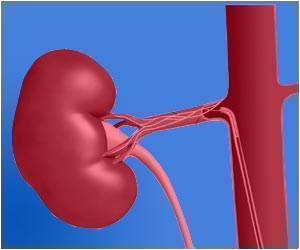New noninvasive carotid imaging technique called volumetric multi-spectral optoacoustic tomography (vMSOT) could offer quicker, more accurate assessment of heart disease risk, reveals a new study.
- New noninvasive carotid imaging technique called volumetric multi-spectral optoacoustic tomography (vMSOT) could offer a quicker, more accurate assessment of heart disease risk
- Most ischemic strokes, or strokes are caused mainly due to the build-up of plaque in the carotid artery
- vMSOT is performed with a handheld device that is moved against the neck, which provides accurate information about the artery that is not attainable with the other available methods
Read More..
"Rapid characterization of tissue function and molecular composition is limited with these modalities, which commonly results in poor diagnostic accuracy and ineffective treatments," said study senior author Daniel Razansky, Ph.D., director of the Functional and Molecular Imaging Lab at the University of Zurich and the Swiss Federal Institute of Technology in Zurich.
Details of the Study
Dr. Razansky and colleagues studied a new technique for carotid artery assessment called volumetric multi-spectral optoacoustic tomography (vMSOT). As with ultrasound, vMSOT is performed with a handheld device that is moved against the neck. However, vMSOT employs the science of spectroscopy to investigate tissue at a molecular scale. This provides information about the artery that is not attainable with other methods. It also can detect lipids, the pigment melanin, and other disease-related biomarkers early enough to provide better treatment options.
Findings of the Study
The researchers performed vMSOT imaging on 16 healthy participants and compared results with those from the conventional ultrasound. The vMSOT approach was able to noninvasively and instantaneously assess the entire bifurcation area of the carotid artery in three dimensions, thus making it less prone than ultrasound to motion-related, image-blurring artifacts. Researchers said the results point to the tremendous potential of the new approach in the clinic.
In the future, vMSOT could be combined with ultrasound for a more comprehensive characterization of the carotid artery.
"Given its fast imaging performance, excellent molecular contrast, portability and affordability, I truly believe that vMSOT will soon be routinely used in the clinic," Dr. Razansky said. "One day, it may even become as popular as ultrasound."
Source-Eurekalert
















